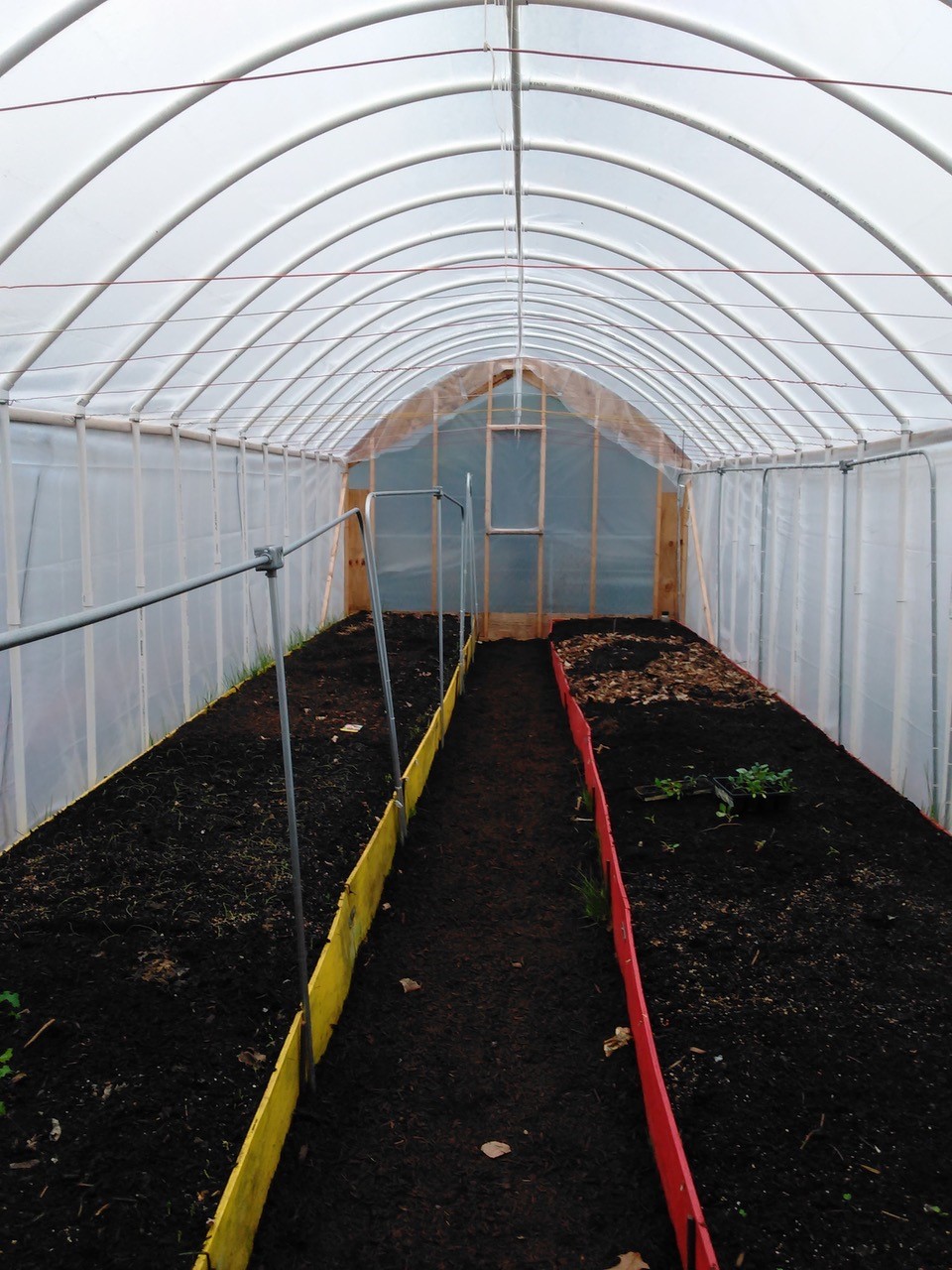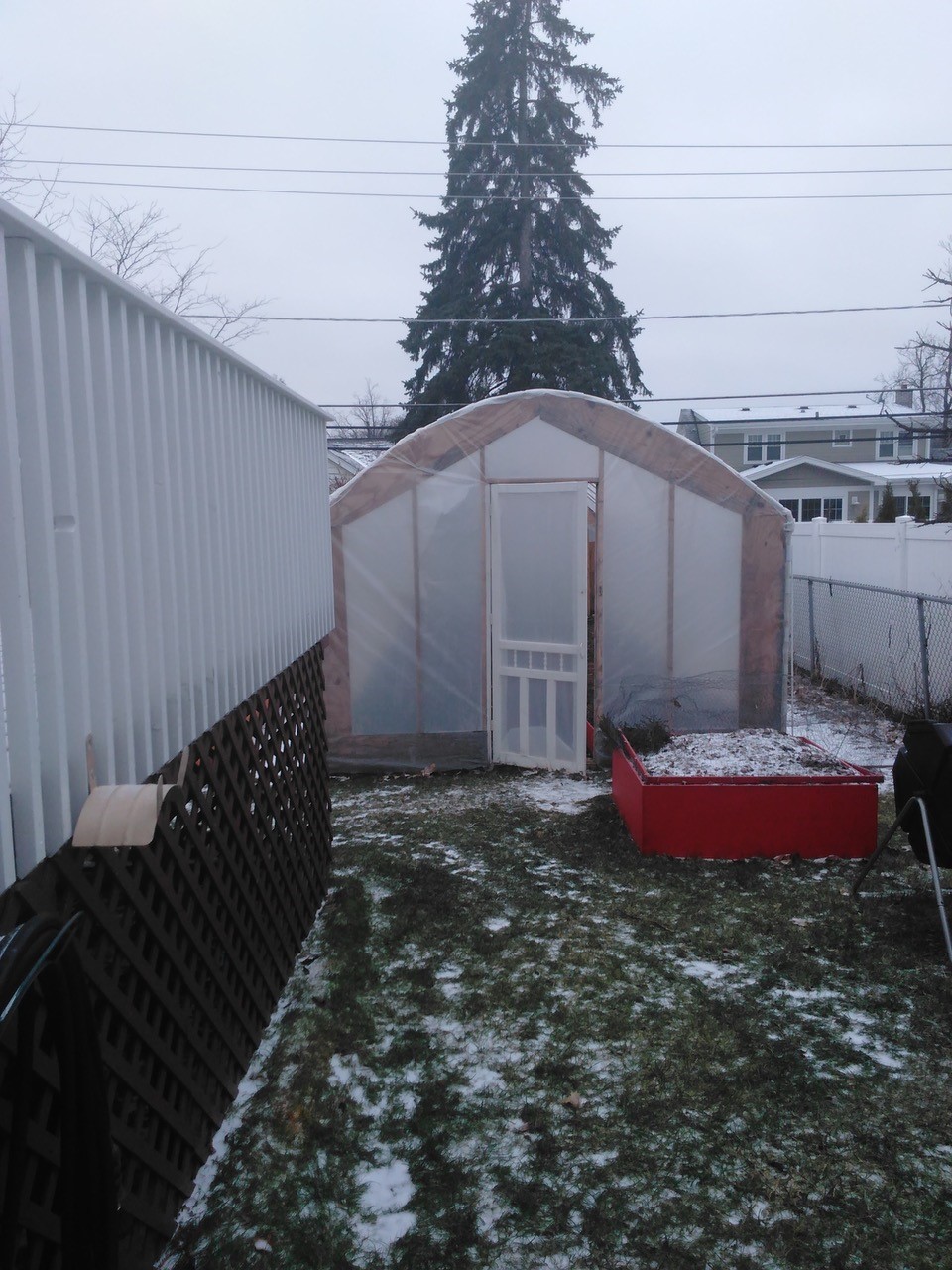Yvonne Agnello-Adams loves her backyard garden where she grows zucchini, beans, lettuce, herbs, cucumbers and tomatoes.
But every October she’s forced to harvest a pile of green tomatoes that haven’t had a chance to ripen on the vine when the cold weather hits. And she’s tired of going through this every fall.
“I can’t eat that many fried green tomatoes,” she said, “because I will turn into a fried green tomato.”
So she wrote in and asked Curious City: How do we extend the growing season without spending thousands of dollars on a permanent greenhouse?
This is a great question any year, but it’s especially compelling in this pandemic year when so many have lost jobs and interest in home gardening has soared. Extending the Chicago growing season could help improve residents’ health, finances and food security.
As we researched the issue, we found that there are several ways to extend the growing season. They include expensive permanent greenhouses, low tunnels that can protect crops for a short time during the shoulder seasons and one very effective and pretty affordable option called a hoop house or high tunnel.
What is a hoop house and where can you use it?

Hoop houses are basically temporary plastic tents that can be placed over sections of the garden to keep crops alive and producing for at least another four months. The tent protects crops from the wind and snow and can keep the soil from freezing. By capturing the heat of the sun during the day, the hoop house can have inside temperatures that are 40 degrees hotter than the temperature outside. These structures are becoming increasingly popular for residential gardeners in northern Illinois, according to the University of Illinois Extension Service.
But whether a gardener can use one of these hoop houses in their yard will vary depending on where they live in Illinois.
In Chicago, for example, you can have a hoop house in your yard with an apex of up to 12 feet. In Lombard, where Yvonne lives, you can have one that is as tall as your home for up to 180 days. But in many municipalities where the zoning codes don’t specifically address hoop houses, their use may hinge on interpretations by local authorities. Avid Elmhurst gardener Nicole Virgil learned that the hard way.
A fight for a hoop house
On a recent overcast morning Curious City visited Virgil’s large Elmhurst garden where she was showing off beds of spinach, potatoes, carrots, chard and lettuce.
“We are big Caesar salad eaters here so I grow Romaine lettuce,” she said, motioning to neat rows of green leaves.
“And, look, a Yukon gold,” she said, pulling a chubby potato from the ground.
Back in 2015 and 2016 Virgil tried to extend the growing season of her garden with a hoop house that was nine feet high at its tallest point.
But soon Virgil faced a complaint from a nearby neighbor who didn’t like the way the hoop house looked. The city followed up with a citation saying Virgil was violating a 2010 code against membrane structures.

The citation launched a three-year fight between Virgil and Elmhurst City Hall that attracted supporters and opponents on both sides. One alderman explained his opposition to Virgil’s hoop house saying that Elmhurst is a “sustainable community but not a rural one.”
At one point there was a proposal to allow hoop houses with a maximum height of six feet.
But hoop house proponents opposed it because agriculture experts said it couldn’t create the thermal mass necessary to reliably protect the plants. The University of Illinois Extension says these kinds of small hoop houses have “greater fluctuation in temperature and humidity and don’t provide an even growing environment.”
But the council’s six foot provision wasn’t based on science. Instead, Elmhurst Mayor Steve Morely said the council chose it “because it marries well with our fence ordinance,” which allows fences to be six-feet high and thus could hide a hoop house from view.
Regardless, the proposal for hoop houses at a maximum height of six feet did not pass the Elmhurst City Council.
Finally, in 2019, the City Council voted to approve much smaller low tunnels but no hoop houses large enough to generate the kind of thermal mass necessary to keep the ground from freezing and the temperature steady.
Hoop house supporters in Elmhurst say the rules and regulations have also been applied unevenly.
Virgil was cited for violating the 2010 ordinance against “temporary membrane structures,” but in 2014 one prominent resident was given a permit that allowed her to put up just such a structure. When asked about it, Elmhurst officials told WBEZ that the permit “was issued in error.” More recently, a group of hoop house supporters, not affiliated with Virgil, found an additional 18 homes that were violating the ordinance had not been cited by the city.
Changing the law to even out the hoop house field
This kind of unequal application of the law is why Jennifer Walling, executive director of the Illinois Environmental Council, says she wants to standardize hoop house rules throughout the state. Last year she helped write the language for a statewide bill called the Right to Garden act.
“First and foremost we wanted a piece of legislation so that people don't ever lose their right to garden by municipalities that are overzealous in the laws they put out,” Walling said. “But if you are going to regulate something [you need] appropriate measures in place ... It is not OK for communities like Elmhurst to make up their own math and science to approve devices that aren’t going to actually work, just so it seems like they allow it when they really do not.”
Despite support in both chambers of the General Assembly and from both sides of the aisle, the Right to Garden bill did not make it to a vote last year. But Virgil and Walling say they look forward to working with legislators to introduce a slightly modified bill in January at the next session of the Illinois General Assembly.
“We are working to reestablish our ability to [extend the season], not just for us, but all Illinois residents,” Virgil said, noting that they are proposing language that would incorporate parts of local zoning regulations.

Morley, for his part, opposes the bill, calling it “a zoning bill” rather than a gardening bill.
“It's bad policy, in my opinion, to create a zoning law on a statewide level that, in my opinion, is a local zoning issue,” he said. “Maybe Oak Brook and Lombard want to have a seven-foot hoop house and Villa Park wants a four-foot hoop house. It should be up to municipalities to create their own zoning code.”
Virgil is hopeful that the nation’s recent turn to more home gardening and self-reliance will highlight the importance of options when it comes to extending the growing season.
“We are greatly hopeful we can establish a state law that will protect all of our rights to grow food at all times but certainly during stay-at-home orders,” she said. “It should be obvious this is a useful activity right now, and hopefully we will get this done for everyone.”
What can you do with all those green tomatoes?
With Chicago’s recent cold spell, like Curious City question asker Yvonne, you may also have a bunch of green tomatoes in your garden. Here are five things you can do with them and the ripe tomatoes you had to quickly pull in from the garden.
More about our question asker
Yvonne Agnello-Adams lives in Lombard with her husband Dan and “our five kitties that we call our ‘fur babies’ ages 2 to 10.”
She is a proud Chicago native who coaches and trains public speakers.
“My coaching focuses on women who have survived abuse, to help them regain their inner strength and rebuild a positive life,” she said.
She and Dan often have to travel for their jobs but have been staying put and doing more gardening this year, while their cats watch them in the yard. And this week she expects to harvest more green tomatoes that she will try to put in a new salsa recipe she has found.
Still, she would love to find a way to grow her produce longer.
“Because in Chicago you only have so long,” she said. “They say you shouldn’t even start planting until Mother’s Day or Memorial Day, and that leaves you about four months.”
So she was thrilled to hear that Lombard does allow temporary hoop houses for up to 180 days as long as they are not taller than her house. Depending on the size of the hoop house they can often be put up for a few hundreds dollars.
“I looked in a gardeners magazine and saw greenhouses that are thousands of dollars,” she said. “So I am glad you did some leg work for me.”
Yvonne believes having a good supply of food from the garden may be more important than ever at this time.
“Right now we don’t really know that the future of the supply chain is going to be,” she said, “so we really need to do things to be better ourselves.”
Monica Eng is the reporter for WBEZ’s Curious City. You can write to her atmeng@wbez.org.



